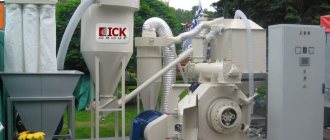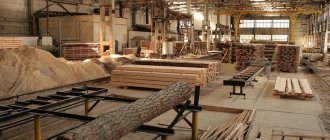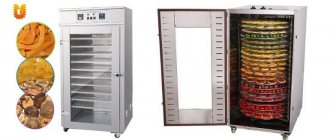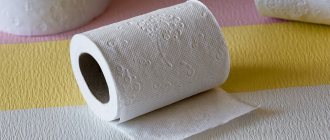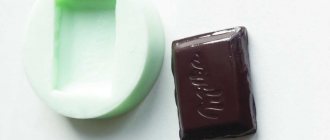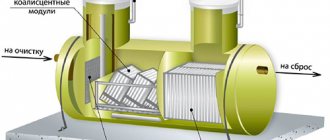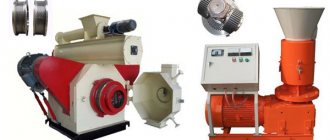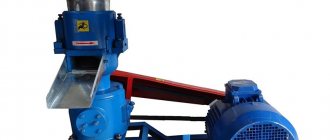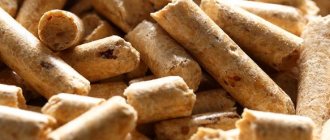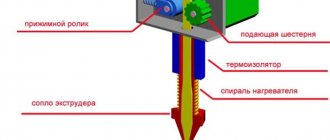This article will describe the concept of pellets, their varieties, the scope of application of these products, and, of course, the step-by-step technological process of their production.
Pellet is a solid fuel material that is used in thermal power engineering, heating residential and industrial premises, and has recently been gaining popularity among residents of private homes. The raw materials for its production are: waste from the wood processing industry (sawdust, chips, branches, tree bark, slabs).
Agricultural waste (husks of sunflowers, corn and buckwheat) is also used. Peat and straw are also raw materials. It is a cylindrical pressed granule (length 10-30 mm, width 6-10 mm).
They are pressed under pressure and high temperature (250-300 °C). Particles of wood and other raw materials are glued together under pressure and temperature using the natural substance lingin, which is contained in the raw material itself.
However, the use of pellets is not limited only to combustible fuel for boilers.
They are also used:
- In animal husbandry (pellets are sprinkled on the floors of animal premises, they act as bedding, absorb moisture well, warm and retain heat).
- When cleaning fuel, lubricants and technical liquids in auto repair shops and gas stations.
- As mulch (protective topping) of soil for your vegetable garden or garden.
- As grill fuel instead of charcoal.
- As cat litter.
- As an absorbent for purifying gas from sulfur.
Main types
Wood pellets
They are made in the form of cylindrical granules from wood waste (sawdust, chips, bark, slabs, low-quality wood). They are divided into household and industrial. Household pellets are made from fresh sawdust and wood chips. Industrial granules contain other impurities. They are light, brownish, or gray.
A lighter color indicates a high quality of granules (light is a sign of the use of exceptionally good wood without bark and clean sawdust). They are the most popular for heating private houses, since this type of pellets has the lowest ash content, since they do not contain dust and tree bark (up to 0.5%) and have good heat transfer.
Vegetable pellets
They are also produced in granular form from agricultural waste (straw, sunflower husks, corn and buckwheat waste). The final product is generally dark in color. In terms of heat transfer, these granules are in no way inferior when it comes to pellets made from sunflower husks, corn and buckwheat, since straw pellets are inferior to wood pellets in this indicator.
But at the same time, straw pellets have their advantages: a large amount of raw materials and low cost. Vegetable pellets have a higher ash content (up to 3%) than wood pellets, so the boiler will need to be cleaned more often. This type is intended for use for industrial purposes, since combustion releases a larger amount of ash.
Peat pellets
They are made in the form of peat granules, the color is dark. They are also popular among industrial enterprises, as they have good calorific, economic and environmental qualities. They are not widespread among private consumers due to their high ash content, since the boiler will need to be cleaned very often after using peat granules.
Is it possible to make pellets at home?
The idea of setting up the production of pellets at home often comes to people who have access to cheap or free wood waste, as well as rural workers who receive by-products from their main activities. Theoretically, of course, everything is possible, but one should take into account the numerous difficulties that lie in wait along this path.
Making pellets at home (or in the garage) is only possible with special equipment. Domestic and foreign industrial enterprises are focused on medium, small and even micro businesses, that is, on the production of equipment with a productivity of hundreds of kilograms per hour. Completely “pocket” installations, as a rule, are manufactured in China, but their durability leaves much to be desired and is also expensive.
Some sources contain information on how to make a small machine for making pellets with your own hands. In the attached video, everything looks simple, but in reality, the artisanal manufacturer most often simply advertises its products.
Homemade equipment
The first thing you should pay attention to is the matrix. It is carried out according to strict technological regulations, which include hardening in order to achieve the standard Brinell hardness (this has already been written above). In addition, each hole must have the shape of a truncated cone, narrowing towards the exit, otherwise the adhesion of molecules in the granule cannot be achieved.
The matrix can be borrowed from equipment for the production of granulated feed - the principle is the same. But the fact is that almost every detail of the installation must be carefully adjusted and of high quality.
However, in Russia there have never been craftsmen capable of making a machine of any complexity from scrap materials. However, for obvious reasons, they are in no hurry to share their knowledge and skills.
When planning a home pellet business, you should carefully evaluate the overall feasibility of the venture. If a household owner intends to use fuel pellets to heat his home, then it may be easier and cheaper for him to throw directly accessible wood waste into the firebox. This, by the way, is what people do in most cases.
At home, it may make sense to press sunflower husks if there is a seed processing plant nearby. But in this case we are talking not about granules, but about briquettes. There is very little lingin in seed husks, husks and cake, so the final product will be too loose.
In general, whether pellets are needed or you can get by with ordinary firewood the old fashioned way, everyone decides for themselves.
Quality requirements
The main requirements for the quality of fuel pellets are:
- The granule should be even and smooth.
- No cracks in the granules, no warping or shedding.
- The granule should be tightly compressed.
- The finished product must have the correct percentage of moisture (it should not exceed 15%).
- It is desirable that the pellets be the same size (mainly manufacturers make fuel pellets from 5 mm to 70 mm in length, and from 6 mm to 10 mm in diameter) regardless of the type of fuel pellet.
- The absence or minimum content of impurities (dust, sand) in the finished product, which deteriorate the quality of pellets.
- Color. For wood fuel pellets, it should be light (lighter is higher quality), since the fewer dark or brown inclusions in the pellet, the less bark and impurities it contains. In peat and plant granules it is dark gray or black.
- There should be no fungus or mold on the pellets.
- There should be no chemicals.
Manufacturing facility
One of the factors affecting the profitability of wood pellet production is the remoteness of the workshop from the main sources of raw materials.
Accordingly, to reduce transportation costs, when choosing a suitable location, it is necessary to take into account the presence of sawmills, processing plants and furniture factories within a radius of 10–12 km. The size and layout of the room are determined primarily by the capacity of the equipment: a small workshop can be placed even in a garage, while a line producing up to 500 kg of pellets per hour requires at least 250 m². In addition, another 200 m² must be allocated for storing raw materials and finished products. The general requirements for the premises will look like this:
- Total area - from 450 m²;
- Compliance with the standards in force for fire hazardous types of production (sawdust and wood dust are considered flammable and explosive materials);
- Availability of water supply (necessary for the operation of the steam generator);
- Possibility of connecting to electrical networks with a power of 120 kW (when using electric drum dryers - 400 kW);
- The presence of a hard floor covering (pellet production machines are mounted on a concrete base with a thickness of 200 mm);
- Ceiling height more than 8–10 m (the required minimum for installing bunkers);
- Availability of access roads for trucks.
Requirements for raw materials for manufacturing
These criteria are few, but they must be fully observed:
- The raw materials should not have any impurities (stones, dust, sand, metal debris, leaves).
- It should contain as many natural adhesives (lingin, resins and other adhesives) as possible, which speeds up the manufacturing process and the quality of the finished product.
- Raw materials should not be very wet, although this is corrected during drying, it still slows down the production process.
Equipment for the production of
The most basic equipment for the production of fuel pellets are:
- scales for large packages (500, 1000 kg);
- packaging machine;
- hopper for finished pellets;
- belt or scraper conveyor;
- smoke exhauster;
- fan for removing screenings;
- cooler;
- press granulator;
- dryer drum;
- a mechanism for loading processed raw materials into the dryer;
- boiler (gas or sawdust);
- mixer;
- hammer mill;
- crusher (drum or disk);
- container for raw materials with conveyor;
- cyclones;
- air sleeves;
- screw conveyors;
- air conveyors;
Production technology
The main technological stages of fuel pellet production are:
Large crushing of raw materials
At this stage, large raw materials are crushed to the required sizes (length up to 25 mm, diameter up to 2-4 mm). This is necessary in order to simplify the operation of the granulator press, since the smaller the material, the better and faster the granules are formed.
This process is carried out using a crusher. Crushing can be done several times if the required material fraction is not achieved the first time. Next, the crushed raw material enters the mixer along the scraper conveyor and then into the drying drum.
Drying of processed raw materials
This stage is one of the main ones and takes place in a drying drum. Hot air is supplied into it from the boiler through the hoses, which dries the moisture from the treated chips. Dried wood chips must have a moisture content of at least 8%, since very dry raw materials will stick worse in the granulator, but not more than 12%, since the finished pellets will burn worse in the boiler.
During drying, the exhaust air under the vacuum of the exhaust fan is captured along with small fractions, which are deposited down into the cyclone for further fine crushing, and the exhaust air is removed into the atmosphere. In this case, part of the smallest fractions enters the boiler via air conveyors.
Fine crushing
This stage is necessary for even greater grinding of chips and sawdust (length up to 4 mm, diameter up to 1.5 mm) to ensure more efficient operation of the granulator press. Fine crushing is carried out using a crushing mill. Raw materials are fed into it from a cyclone.
In the crusher, the raw material is crushed to the state of flour, and then this flour goes through air conveyors into cyclones (1st cyclone for the primary separation of wood flour from the air, 2nd cyclone for the secondary, final separation). Then, after air separation, the wood flour is fed to a direct screw conveyor. Then from the direct to the inclined screw conveyor into the hopper of the granulator press, in which the mixer is installed.
Humidity adjustment
This process will take place in a special device - a mixer. Correcting the humidity is very important, because if the raw material is very dry (humidity less than 8%), then the gluing of the raw material in the press granulator will be poor. A mixer is required for adjustments. If necessary, it will supply steam or water through its channels and the output will be wood dust with the correct humidity.
Granulation and pressing
This process takes place in a special press granulator. After the moisture content of the raw materials has been adjusted in the mixer, they enter the granulator. In it, under high press pressure and high temperature (250-300 ° C), the raw material is pressed through a special matrix, passing through which wood dust is glued into cylindrical granules.
The resins and lingin contained in crushed wood are natural adhesive materials. This glue, under high pressure and temperature, qualitatively glues particles of raw materials into granules. A stationary knife is installed in the granulator, which cuts the finished material extruded from the matrix into granules of the required size (length 10...30 mm, width 6...10 mm). Next, the granules are fed into the cooler.
Pellet cooling
The finished granules that just come out of the granulator are very hot, so they need to be cooled. This operation is carried out using a cooler. The pellets entering the cooling column are blown with air from a fan, which “sucks” hot air from the pellets and captures non-granulated wood flour.
Hot air is removed into the atmosphere, and flour is removed into a cyclone. The physico-chemical properties of the fuel pellets change during cooling, and due to this they acquire the correct level of moisture content, hardness and temperature (70-90°C). Next, the granules are sent for packaging.
Packaging of finished products
The final stage of production of fuel pellets. From the cooling column, the finished granules are transported via a belt or scraper conveyor to the finished product bunker. The bunker is equipped with scales to accurately know the weight of the bag packed with pellets. Here, granulated pellets are packed into bags (10 kg, 25 kg, 50 kg). Pellets are also packaged in large bags (250 kg, 500 kg, 1000 kg).
That's actually the whole production process.
The final waste from the combustion of fuel pellets is ash. Its disposal consists of cleaning the ash drawer in the boiler. Ash can be used to fertilize the soil in your garden, garden, and flower beds, as it is an excellent fertilizer.
From this we can conclude that both the production and use of fuel pellets is environmentally friendly and waste-free (waste can be put to useful use).
Advantages and disadvantages of solid fuel in the form of fuel pellets
The main advantages of pellets:
- environmental cleanliness (when burning this type of solid fuel, carbon dioxide is released in volumes equal to the volumes formed during the natural decomposition of various wood wastes);
- fire safety (pellets are less susceptible to spontaneous combustion than other types of solid fuel);
- optimal humidity (8-10% versus 30-50% for logs) and density (one and a half times higher than that of firewood);
- remarkable calorific value, one ton of fuel pellets is enough to produce 3500 kW/h of thermal energy;
- constant and very high bulk density, which facilitates logistics, loading and transportation of pellets;
- the uniformity of the structure in shape and size makes it possible to automate all processes of loading and loading and combustion of fuel pellets in boilers.
Cons of pellets:
- high cost of solid fuel at the present stage;
- to burn pellets you need a special pellet boiler equipped with automation, which also costs more;
- the volume of supply on the market is low, the situation will improve over time, but pellets must be purchased in reserve and stored in warehouses, preventing excess moisture from entering.
Comparison of pellet production technologies
Made from wood
Stages of wood pellet production:
- Coarse crushing of wood waste in a hammer crusher.
- Drying chopped wood in a drying drum.
- Fine crushing (bringing it to wood dust).
- Control of humidity in the mixer (if necessary, supply steam or water).
- Pressing and granulating fuel pellets in a granulator press.
- Cooling of finished cylindrical granules in a cooler (temperature 70-90°C).
- Packaging and packaging of finished products in bags.
From sawdust
The production of sawdust pellets proceeds as follows:
- Dry the sawdust so that its moisture content does not exceed 12%.
- Take a sieve and sift the sawdust so that no debris (small stones, leaves, etc.) gets into the granulator.
- Grinding sawdust in a hammer mill.
- If the humidity is below 8%, the crushed sawdust must be fed into the mixer (increase the humidity to 8-10%).
- Granulation of sawdust pellets.
- Cooling and drying of granules in a cooler.
- Packing sawdust pellets in paper bags.
From straw
Production of straw pellets:
- Straw chopping (length up to 4 mm).
- Re-crushing in a mill crusher.
- Drying in a tumble dryer.
- Control of the humidity of chopped straw in the mixer (water or steam supply).
- Pressing and granulation of straw flour.
- Cooling straw pellets in a cooler.
- Packaging of straw pellets.
From the slab
Slab pellets are produced as follows:
- Processing of slabs in a chipper (chip length up to 50 mm).
- Crushing wood chips in a hammer crusher.
- Drying slab chips in a drying drum (humidity from 8% to 12%).
- Fine crushing in a mill crusher (to the state of wood dust).
- Control of humidity in the mixer (if humidity is below 8%, steam or water is supplied).
- Granulation of slab wood flour in a granulator press.
- Cooling of cylindrical slab granules.
- Packing of slab pellets into bags.
From peat
The manufacturing technology for peat fuel pellets is as follows:
- It is necessary to lay out the peat so that it can dry naturally.
- It must be cleared of debris (plant roots, leaves, stones).
- Grinding peat in a crushing machine.
- Dry the peat mass in a dryer to a moisture content of no more than 12%.
- Re-grind (finely crush) in a crushing mill.
- Feed the crushed peat mass into a granulator press with a built-in mixer for peat granulation and steam treatment.
- Cool the peat pellets in a cooling column.
- Pack the finished fuel pellets into bags.
Business registration and licensing
It is very important, already at the stage of working on a business plan, to understand how the main types of support for the enterprise’s activities will be carried out: information, tax and legal. To carry out activities, the easiest way is to register an LLC or individual entrepreneur. For our enterprise, we will consider registering a legal entity in the form of a limited liability company. Taxation – simplified reporting system (income minus expenses).
There is no need to license a pellet production business. When working to export pellets, you should be guided by the following documents: Letter of the Federal Tax Service of the Russian Federation No. 06-73/44165 dated December 14, 2006 and Government Decree No. 442 dated July 17, 2003 “On the transboundary movement of hazardous waste.” It is also necessary to familiarize yourself with the national standards for pellets and the European certification system EN plus.
To sell pellets in Russia, products must be certified. The cost of certification for calculations will be assumed to be 30,000 rubles.
In our calculations, we will assume that the enterprise operates on the domestic market. The cost of registering an LLC is 10,000 rubles.
